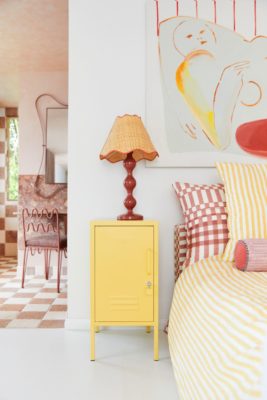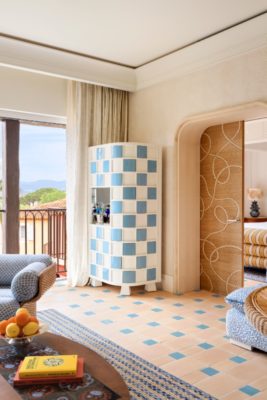
The 60-30-10 Interiors Rule: How To Add Colour To Your Home
By
8 months ago
The rule that interior designers swear by
Want to create picture-perfect interiors? It all comes down to the colour palette – but if you’re not sure where to start, the 60-30-10 rule could be the answer. Here’s everything you need to know.
What Is The 60-30-10 Rule?
According to Molly Freshwater, co-founder of Secret Linen Store, the 60-30-10 rule helps you understand ‘how to distribute colour proportions within your home.’ It’s based on the idea that any interior design scheme can be divided into three colour categories, each of which make up a certain percentage of the space.
‘If you use this rule, 60 percent of the room should be your feature colour, 30 percent a secondary colour, and the remaining 10 percent an accent colour,’ Molly explains. ‘This guideline will create visual balance.’
How To Apply The 60-30-10 Rule: A Room-By-Room Guide
Molly notes that you can apply the 60-30-10 rule in a similar way for most rooms, with the main colour usually used on the walls. In the living room, for example, she suggests featuring ‘the dominant colour on the walls or furniture, the secondary colour on upholstery, and any accents on cushions and trims.’

Howes & Landino x Stark Carpets
For bedrooms, the dominant colour is best for ‘walls or bedding, with the secondary colour on curtains and throws, and the accent colour again on cushions and trims.’ Similarly, a good formula for a home office is to apply the dominant colour ‘to the walls, the secondary colour to the furniture, and the accent colour to pictures and desktop accessories,’ Molly adds.
As you might expect, kitchen colour palettes begin with the dominant colour on cabinets and worktops, while the secondary colour can be showcased using kitchen appliances and utensils, and accent colours can be displayed using a splashback and any artwork on the walls.
When it comes to colour combinations themselves, meanwhile, Molly recommends opting for soft and neutral colours to conjure a feeling of calm – especially in the bedroom. ‘Natural and warm sludgy colours are all best friends,’ she states. ‘Create a colour palette with swatches and samples and choose your bedroom textiles to work within your scheme.’






